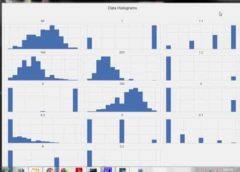Stock Prediction using clustering and classification model
Stock Prediction
1. Data Collection Phase:
a. We have collected real time data from nse website.
b. Any stock with NSE symbol can be given in the textbox “Enter Symbol” Ex. SBIN, HDFC, TCS, INFY
c. Press Submit button to extract real time data from 2000 to present date
d. Feature collected are Date, Symbol, Series, Prev close, Open, High, Low, Last, Close, VWAP, Volume, Turnover
e. Also shown price trend in graph
2. Prediction Phase
——————–
a. We have applied Kmeans Clustering, we have created 3 clusters namely, Cluster0, Cluster1, Cluster2
b. Centroid plot is done for Three cluster
c. Random Forest and Decision Tree algorithm is applied in Clusters for prediction.
d. Predicted value and Real (original) values are ploted.
e. Accuracy and Error values are arrived
3. Forecast Phase
——————
a. Five days forecast using Decision Tree and Random forest is done.
Python Demo









